Intertidal Walk at Big Sisters Island
 February 16, 2017
February 16, 2017

By Nicholas Chew – On Sunday, a few Hantu Blog volunteers were invited to participate in an intertidal guided walk at Big Sisters Island, part of our very own marine park. The walk was organised by Ria Tan, creator of wildsingapore.com and an avid environmental activist. Over the years, Ria and other like-minded nature lovers have been regularly documenting biodiversity on our shores with a mission to promote the appreciation and conservation of our natural heritage. It was a great privilege to join them! Above: The jetty at Big Sisters Island.
As soon as we had set foot on the island, everyone got to work! Intertidal areas are best accessed during spring low tides, when the low intertidal zone is exposed and more biodiversity can be observed. However, our window of time is limited. After a couple hours, the tide quickly returns and all this spectacular marine life goes back underwater and out of sight.
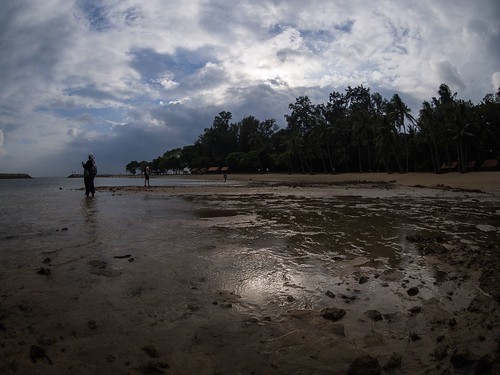
The intertidal zone revealed during a very low tide.
It was fascinating to see the members of our team skillfully locate interesting creatures one after another. I immediately sensed the passion in these guys, and it was contagious! Their ability to identify anything and everything we came across was astonishingly impressive.
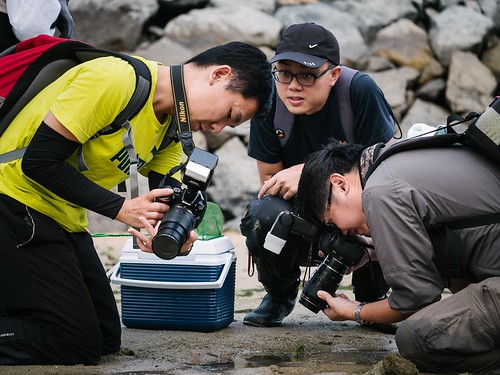
Being accustomed to finding creatures while diving, I found it difficult to spot creatures at first. Diving lets you sneak up to your subjects unnoticed, plus there isn’t usually any surge or wave action to deal with. In addition, everything looks larger underwater, which is a big plus for spotting tiny critters. My eyes took some time to calibrate.
To our dismay, the tide did not recede as much as expected. Tide predictions are sometimes a little inaccurate. To make matters worse, it was also an unusually windy day, which meant the water was rather choppy and sediment was stirred up within the lagoons. It was tough to spot anything underwater due to these conditions. However, we still managed to find some interesting critters!

A hermit crab checks out an empty shell. I’d say its existing property looks better. Hermit crabs were in abundance all over the intertidal areas.

A small sponge crab blends amazingly well to its surroundings. Sponge crabs are able to cut off a fragment of sponge and trim it to fit its shell for camouflage or protection. Cute!
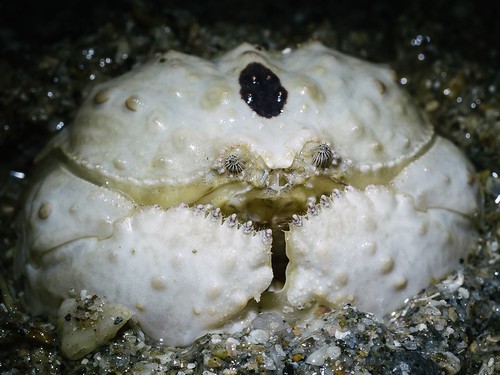
A young Box crab partially buries itself. This species is listed as Vulnerable in the Red Data List of threatened animals of Singapore.
Several flower crabs were seen too, but they were too skittish to photograph.
Sea slugs were in abundance, especially Costasiella spp. (also known affectionately as Shaun the Sheep). These are among my favorites!
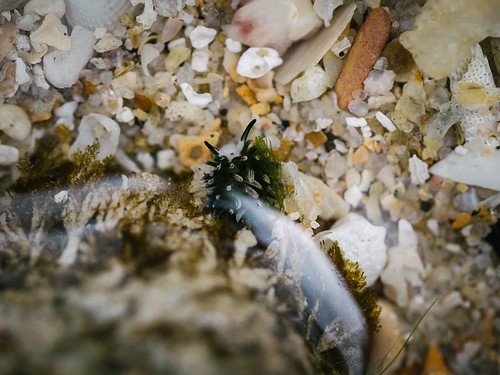
Costasiella sp. These slugs are really tiny, usually only about 3-5mm in length.
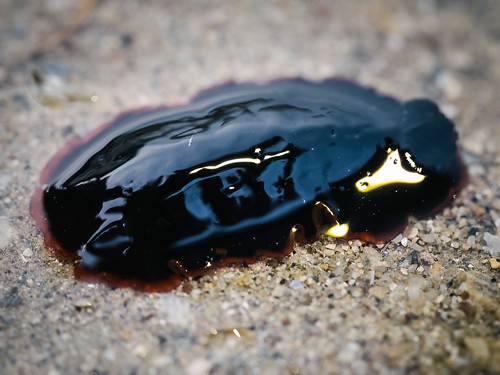
Dendrodoris sp. Others on the trip told me that this was an uncommon find.

Onchidium slugs (affectionately known as “Onchs”) have one of the craziest camouflages I’ve ever seen.
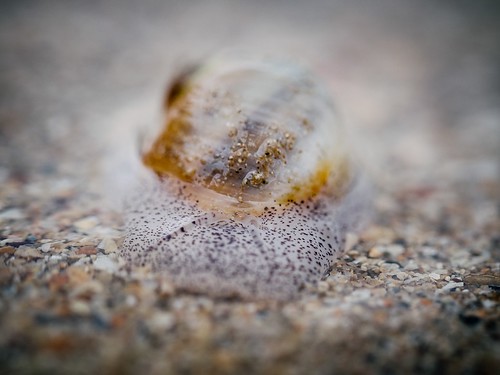
Spotted moon snails were found in the sandy areas.
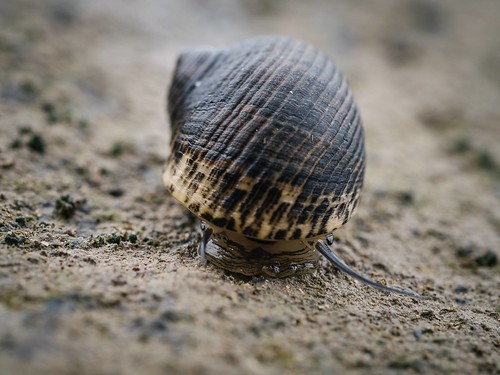
Nerita snails were also found on seawalls beside the lagoons on the island.
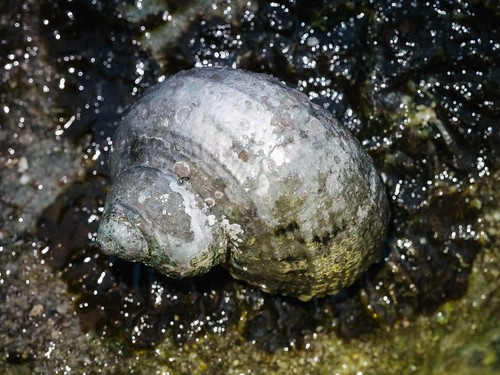
A Turban Snail on the rocky shore.

Zoanthids with tentacles retracted.
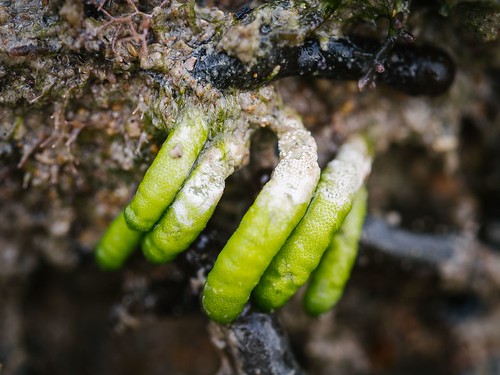
These green calcareous algae are of the genus Neomeris.
I saw quite few coral colonies due to the tides not going low enough. However, there was little sign of bleaching stress. Some corals had dead portions that have been overtaken by algae.
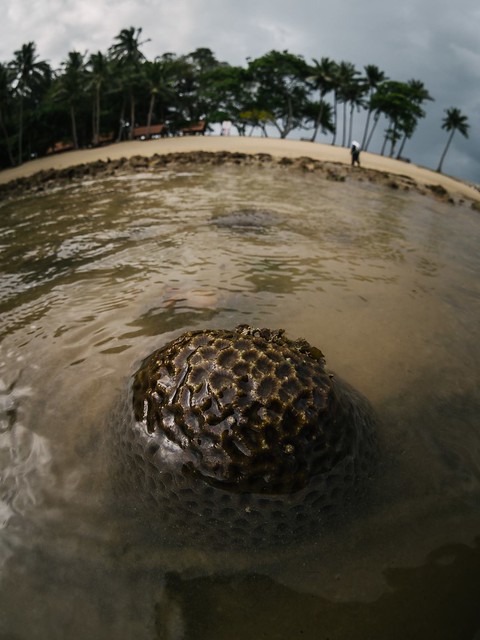
Hard coral, Goniastrea sp., with the beach in the background.
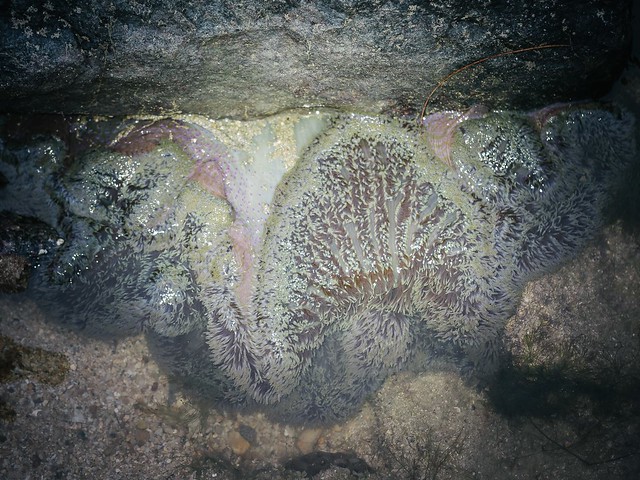
There were quite a few large carpet anemones.
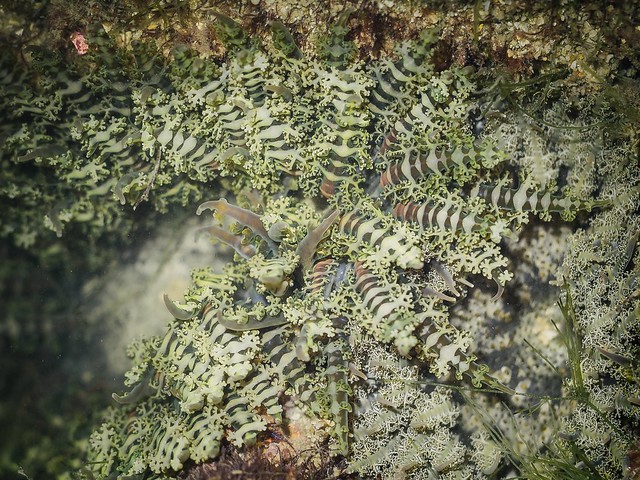
Banded Frilly Anemone. Very beautiful!

I also saw a discarded tire on the eastern lagoon.

There was a nice sunset on the western lagoon during the lowest tide of the evening. I took a moment to savour the view with these leathery soft corals for company!
The returning tide signalled the end of our survey, and we soon made our way back to the jetty to wait for the boat. By then it had gone almost completely dark.
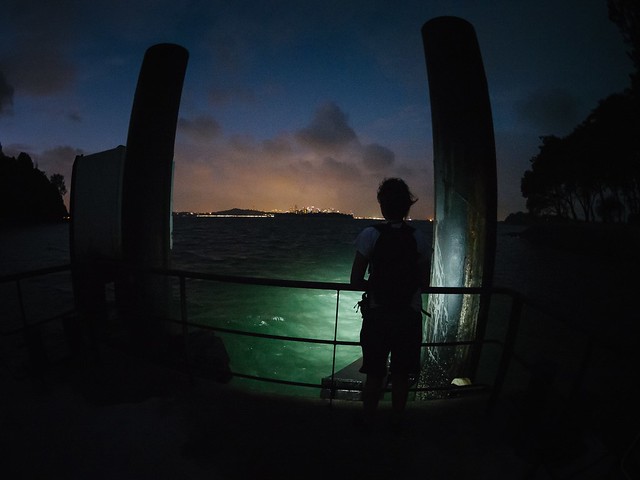
Debby searches for fish around the jetty, with the glow of mainland Singapore in the distance. We saw a couple of garfish!
Hats off to Ria and the team for the good work they do! I have personally learnt a lot from this trip and have a great admiration for some of these guys for their dedication to conservation. It has been inspiring, to say the least!
Check out Ria’s post about this visit to Sisters’ Island, and visit wildsingapore.com for more information on Singapore’s biodiversity, volunteer opportunities and upcoming events.
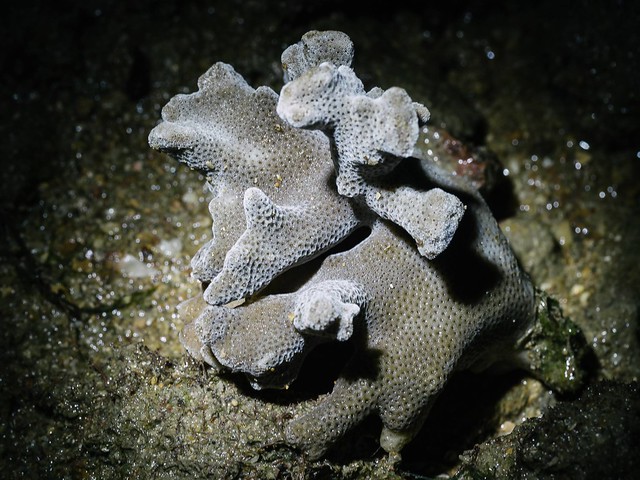
 Posted in
Posted in 



 content rss
content rss
COMMENTS